China tiles encapsulate millennia of artistic and technological evolution. Originating in ancient China, these tiles have traversed through dynastic changes, reflecting the cultural and technological advancements of their times. From the green-glazed roof tiles of the Han dynasty to the polychrome beauties of the Tang era, each period contributed uniquely to the craft's development.
The essence of Chinese ceramic tiles lies not just in the material—predominantly kaolin-rich clay—or the myriad glazing and firing techniques, but in the profound cultural symbolism embedded within their designs. These tiles serve as more than mere architectural elements; they are vibrant storytellers of Chinese heritage.
In contemporary settings, the legacy of these tiles continues, blending tradition with modernity. Innovations such as tile trim enhance the functionality and aesthetic appeal of ceramic tiles, ensuring their relevance in modern design. This harmonious fusion of past and present showcases the enduring beauty and adaptability of Chinese ceramic tiles, making them a timeless choice in the narrative of architectural and interior design.
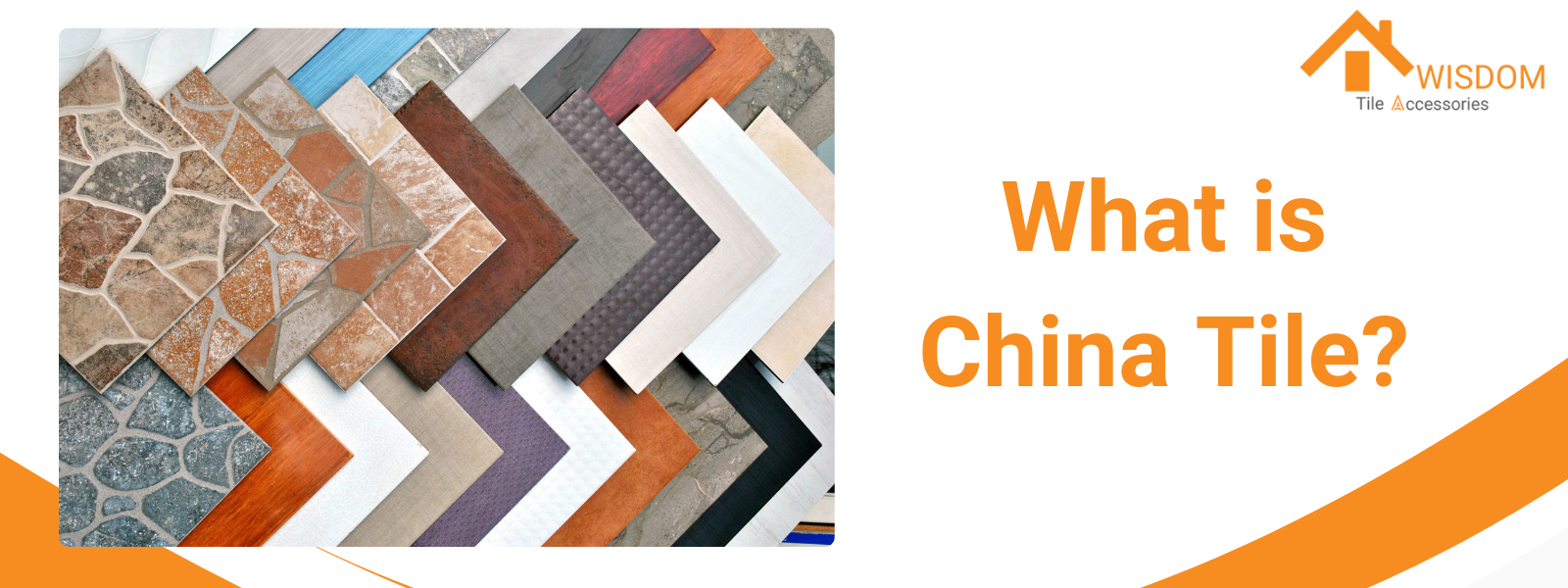
What is China Tile?
China tile refers to a category of ceramic tiles that originated in China, embodying a tradition of pottery and ceramic art that dates back thousands of years. These tiles are distinguished by their material composition, manufacturing processes, and decorative techniques, which have been refined and passed down through generations. The term encompasses a broad range of ceramic tiles, including those used for flooring, wall coverings, roofing, and decorative purposes.
Historically, China tile production has leveraged the abundant kaolin and clay resources found within the country's borders. These materials undergo a series of processes including shaping, drying, and firing at high temperatures. This manufacturing sequence results in tiles that are noted for their strength, durability, and resistance to moisture.
Decoration of China tiles involves various techniques such as glazing, hand-painting, and the application of intricate designs. These methods contribute to the aesthetic diversity of China tiles, allowing for a wide range of colors, patterns, and textures. The decorative motifs often carry cultural and symbolic significance, reflecting historical, natural, and mythological themes.
In the context of global architecture and design, China tiles are valued for their aesthetic appeal and functional qualities. They play a significant role in both traditional and contemporary settings, facilitating preservation of heritage while also adapting to modern aesthetic preferences and technical requirements.
The study and appreciation of China tiles offer insights into the technological advancements, artistic expression, and cultural heritage of Chinese society. As such, they remain a subject of interest for scholars, designers, and consumers alike, representing a fusion of artistry, craftsmanship, and historical significance in the field of ceramic tiles.
Historical Origins and Evolution
The genesis and development of China tile trace back to ancient Chinese civilizations, where the earliest forms of ceramics were produced. These initial endeavors laid the groundwork for what would become a sophisticated tile-making tradition, deeply intertwined with China's cultural and technological advancements.
Early Beginnings
The production of ceramic tiles in China can be dated to the Neolithic period, with the earliest examples displaying simple forms and minimal decoration. These early tiles were primarily functional, serving as architectural components in buildings and structures. The discovery of pottery techniques during this era facilitated the evolution of tile-making, as artisans began to explore the potential of clay.
Dynastic Contributions
As Chinese society progressed through successive dynasties, so too did the techniques and aesthetics of tile production. Each dynasty brought its own innovations and stylistic preferences to tile-making.
- Han Dynasty: The use of stamped tiles began, featuring patterns and motifs that carried symbolic meanings. This period also saw the introduction of green-glazed roof tiles, which would become a hallmark of traditional Chinese architecture.
- Tang Dynasty: Advances in glazing technology led to the production of tiles with richer colors and more intricate designs. The period is noted for its polychrome tiles, which adorned the walls and floors of palaces and temples.
- Song Dynasty: This era is characterized by refinement in ceramic techniques, including the production of tiles. The emphasis was on subtle beauty and simplicity, with a focus on natural glaze colors that mirrored the environment.
- Ming and Qing Dynasties: These periods witnessed a further elaboration of tile decoration, with increased use of vivid colors and elaborate pictorial scenes. Roof tiles in particular became more ornate, featuring figures of mythical creatures and intricate patterns.
Technological Advancements
Throughout history, the evolution of kiln technologies played a crucial role in the development of China tile. The invention of dragon kilns and later, more efficient kiln designs, allowed for higher firing temperatures and more consistent results. These advancements made it possible to produce tiles that were not only more durable but also offered a wider variety of finishes and decorative effects.
Cultural Exchange
The Silk Road and maritime trade routes facilitated the exchange of goods and ideas between China and other civilizations. This cultural exchange influenced tile designs, introducing new patterns, techniques, and materials into the Chinese tile-making tradition. Conversely, Chinese ceramic tiles and techniques also spread abroad, influencing tile-making in other cultures.
The historical evolution of China tile is a testament to the ingenuity and creativity of Chinese artisans and their ability to adapt to changing societal needs and preferences. From functional beginnings to becoming objects of artistic expression and symbols of cultural identity, China tiles encapsulate the dynamic interplay between tradition and innovation in Chinese history.
Cultural Significance and Artistic Expression
The cultural significance and artistic expression inherent in China tile underscore its role not merely as a utilitarian object but as a medium through which Chinese history, philosophy, and aesthetics are communicated. The evolution of tile artistry over centuries reflects the changing dynamics of Chinese society, embodying the values, beliefs, and artistic sensibilities of the times.
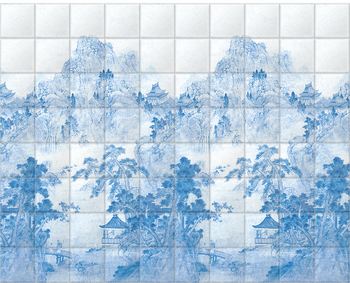
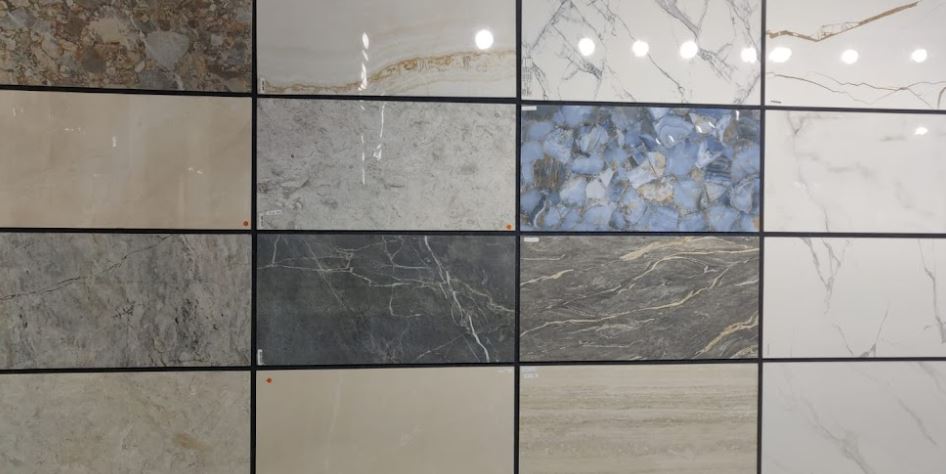
Symbolism and Motifs
China tiles often bear motifs and designs laden with symbolic meaning, deeply rooted in Chinese culture and cosmology. Dragons, phoenixes, lotus flowers, and other natural elements are not merely decorative; they convey wishes for prosperity, longevity, and harmony with nature. The choice of colors also carries significance, with red representing good fortune and happiness, green symbolizing renewal, and yellow often reserved for imperial use, denoting power and prestige.
Architectural Embellishment
In traditional Chinese architecture, tiles play a critical role in the aesthetic and functional aspects of buildings. Beyond their practical use for roofing, flooring, and wall coverings, tiles serve as architectural embellishments that enhance the spiritual and visual harmony of structures. Temples, palaces, and gardens adorned with elaborately designed tiles reflect the high level of craftsmanship and attention to detail that characterize Chinese cultural heritage. The use of roof tiles, particularly in imperial and religious buildings, is noteworthy; the intricate designs and vibrant colors of these tiles signify the building's importance and its alignment with cosmic principles.
Artistic Merit
The creation of China tiles is an art form that requires a deep understanding of materials, techniques, and aesthetic principles. Artisans who specialize in tile-making are esteemed for their skill in blending form, function, and beauty. The handcrafted nature of traditional tiles, with each piece bearing the marks of its maker, adds a unique artistic value that is increasingly appreciated in the context of global art and design. Contemporary artists and designers often draw inspiration from the rich tradition of China tile, reinterpreting classic motifs and techniques to create works that bridge the past and present.
Reflection of Societal Values
The motifs, styles, and production techniques of China tiles reflect the societal values and technological advancements of their time. For instance, the emphasis on harmony with nature and the natural world in Chinese philosophy is mirrored in the prevalent use of floral and faunal motifs. Similarly, the progression of tile-making techniques over the centuries showcases the value placed on innovation and mastery of craft within Chinese society.
China tiles, therefore, serve as a canvas on which the tapestry of Chinese culture is intricately woven. They are a testament to the enduring spirit of creativity and cultural expression, capturing the essence of the Chinese aesthetic and philosophical outlook. As such, the study and appreciation of China tiles offer a window into the soul of Chinese civilization, revealing the depth and richness of its cultural heritage.
Materials and Techniques
The production of China tiles is a complex process that involves a meticulous selection of materials and the application of specialized techniques. This process reflects centuries of innovation and refinement, underpinned by a deep understanding of the properties of natural resources and the possibilities they offer for artistic expression and architectural utility.
Selection of Materials
The primary material used in the creation of China tiles is clay, specifically types that are rich in kaolin. Kaolin clay is prized for its plasticity, whiteness, and high firing temperature, which makes it ideal for producing tiles that are both durable and aesthetically pleasing. Other materials, such as feldspar, quartz, and various minerals, are often added to the clay mixture to modify its properties, such as enhancing its color, translucency, or strength.
Glazing Techniques
Glazing is a pivotal technique in tile production, involving the application of a glassy coating that is fused to the tile surface through firing. Glazes serve multiple purposes: they waterproof the tile, enhance its durability, and provide a medium for color and decoration. The range of colors and effects achievable through glazing is vast, with techniques evolving over time to include underglaze, overglaze, and salt glaze, among others. The choice of glazing technique and the composition of the glaze itself are critical factors that influence the final appearance and functionality of the tile.
Firing Processes
Firing is the process by which raw clay forms are transformed into durable ceramic tiles. The development of kiln technology has been a key aspect of tile production, with different types of kilns used throughout history, including dragon kilns, mantou kilns, and, more recently, electric and gas kilns. The temperature and duration of firing, as well as the atmosphere within the kiln, significantly affect the physical and aesthetic properties of the tiles, such as their hardness, color, and texture.
Decorative Techniques
Decoration is an essential aspect of China tile production, encompassing a wide range of techniques from hand-painting and incising to embossing and the use of inlays. Traditional methods often involve painting designs with colored glazes before the final firing, a technique that allows for intricate patterns and imagery to be permanently fused to the tile's surface. Modern techniques may include digital printing on tiles, enabling high-definition replication of traditional designs or the creation of entirely new aesthetics.
Innovation and Adaptation
The evolution of materials and techniques in China tile production reflects a balance between preserving traditional methods and embracing modern innovations. Advances in ceramic science and kiln technology have expanded the possibilities for tile design and application, allowing for greater precision, efficiency, and creativity in the production process. At the same time, there is a renewed interest in traditional practices, as artisans and manufacturers recognize the value of handcrafted tiles and the unique qualities they bring to architectural and decorative projects.
The materials and techniques used in the production of China tiles are fundamental to their identity and function. They encapsulate a rich history of technological advancement and artistic exploration, demonstrating the capacity of human ingenuity to create objects of enduring beauty and utility.
Contemporary Applications and Trends
In the modern era, the application of China tiles, complemented by innovations such as tile trim, showcases a blend of tradition and contemporary design sensibilities. This fusion reflects not only the aesthetic versatility of China tiles but also their adaptability to current trends and practical needs in architecture and interior design.
Integration of Traditional Elements in Modern Design
China tiles, with their rich heritage and distinctive aesthetic, are increasingly being incorporated into contemporary architectural projects and interior spaces. This trend is driven by a desire to infuse modern designs with elements of traditional elegance and cultural depth. Tile trim, a product designed to provide clean edges and professional finishing touches to tiled surfaces, plays a crucial role in this integration. It allows for the seamless incorporation of China tiles into various spaces, ensuring that the transition between traditional motifs and contemporary design elements is both aesthetically pleasing and functionally sound.
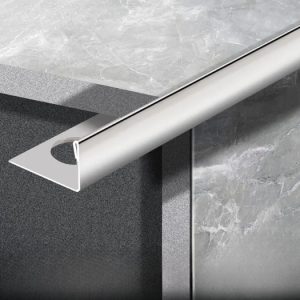
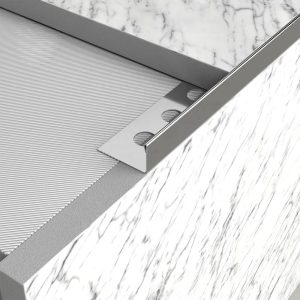
Tile Trim: Enhancing Aesthetics and Functionality
Tile trim products are engineered to address the practical considerations of tile installation, such as edge protection, moisture ingress prevention, and aesthetic cohesion. Available in a range of materials, including metal, plastic, and ceramic, tile trim complements the visual appeal of China tiles while enhancing the overall durability and longevity of tiled surfaces. This synergy between tile and trim facilitates innovative design applications, from intricate backsplashes in kitchens and bathrooms to decorative accents in public spaces and commercial establishments.
Sustainability and Eco-Friendly Trends
The contemporary focus on sustainability and environmental responsibility has influenced the production and application of China tiles and tile trim. Manufacturers are increasingly adopting eco-friendly practices, such as recycling materials and reducing energy consumption during production. Furthermore, the natural durability and longevity of ceramic tiles, coupled with the protective benefits of tile trim, contribute to sustainable building practices by minimizing the need for frequent replacements and reducing waste.
Digital Innovation and Customization
Advancements in digital technology have revolutionized the design and customization of China tiles and tile trim. Digital printing techniques enable the reproduction of intricate traditional patterns with high fidelity, as well as the creation of custom designs that cater to individual preferences and contemporary trends. This capability facilitates a personalized approach to interior design, allowing architects and designers to craft unique spaces that reflect a blend of historical influences and modern aesthetics.
The Future of Tiled Spaces
Looking forward, the application of China tiles and tile trim is set to expand, driven by ongoing innovations in material science and digital fabrication techniques. These developments promise to further enhance the functionality, aesthetic appeal, and environmental sustainability of tiled surfaces. As a result, China tiles, augmented by the practical and decorative benefits of tile trim, will continue to play a pivotal role in the evolution of architectural and interior design trends, bridging the gap between the rich tapestry of the past and the dynamic possibilities of the future.
Why Choose Awisdom’s Tile Trim
In the realm of architectural beauty and design innovation, where the ancient artistry of Chinese ceramic tiles meets contemporary style, Awisdom Tile Accessories stands at the forefront, offering an exquisite selection of tile trims and decorative solutions. Our expertise, honed since 2002, has positioned us as a distinguished global provider, committed to enhancing the elegance and functionality of your spaces.
As you've journeyed through the evolution and cultural significance of Chinese ceramic tiles, the importance of precision and aesthetic harmony in their installation cannot be overstated. Awisdom Tile Accessories is dedicated to complementing this timeless tradition with our comprehensive range of tile trims, wall panel edge trims, floor trims, and more, each designed to bridge the gap between the enduring allure of Chinese ceramics and the demands of modern architecture.
Our commitment to innovation, quality, and sustainability is evident in every product we offer, from stair nosing and transition strips to LED profiles and tile leveling systems. By choosing Awisdom Tile Accessories, you're not just selecting a product; you're embracing a legacy of excellence and a future of endless possibilities.
Elevate your design project with Awisdom Tile Accessories, where every detail is an opportunity to reflect the sophistication and depth of your vision. Explore our collection today and take the first step towards transforming your space into a testament to the harmonious blend of tradition and innovation.
FAQ about China Tiles
What is the difference between Italian and Chinese tiles?
The distinction between Italian and Chinese tiles largely comes down to design diversity, technological innovation, and the aesthetic qualities imparted by their place of origin. Italian tiles are celebrated for their extensive design variations, offering a realistic look with multiple faces on premium ranges, which reduces pattern repetition and enhances the authentic appearance of the tiles. This diversity in design, coupled with Italy's renowned craftsmanship and advanced manufacturing processes, contributes to the higher pricing but ensures long-lasting quality and aesthetic appeal.
Conversely, Chinese tiles are recognized for their cost-effectiveness and have made significant strides in quality and durability, making them a viable option for many consumers. While they may offer fewer design permutations compared to their Italian counterparts, leading to more repetitive patterns, the advancements in Chinese tile manufacturing have narrowed the quality gap between the two, offering a compelling choice for homeowners and developers alike, especially for those working within a budget.
Who is the biggest importer of tiles in the world?
As of the information available up to now, the United States remains the largest importer of tiles globally. The U.S. market's demand spans a wide array of tile products, driven by diverse architectural and interior design needs across its robust construction and renovation sectors. This significant demand reflects the U.S.'s ongoing need for both luxury and cost-effective tiling solutions, accommodating a broad spectrum of consumer preferences and project requirements.
For more detailed insights into tile choices and considerations, exploring dedicated tile suppliers and their offerings can provide valuable guidance tailored to specific design visions and functional needs.


